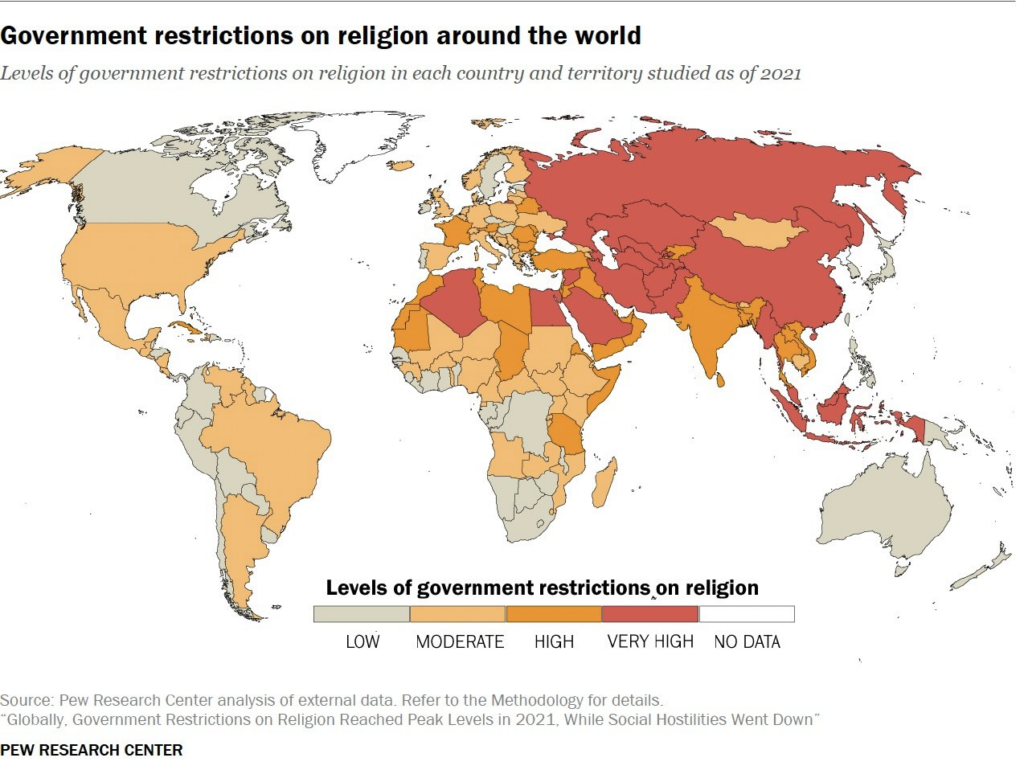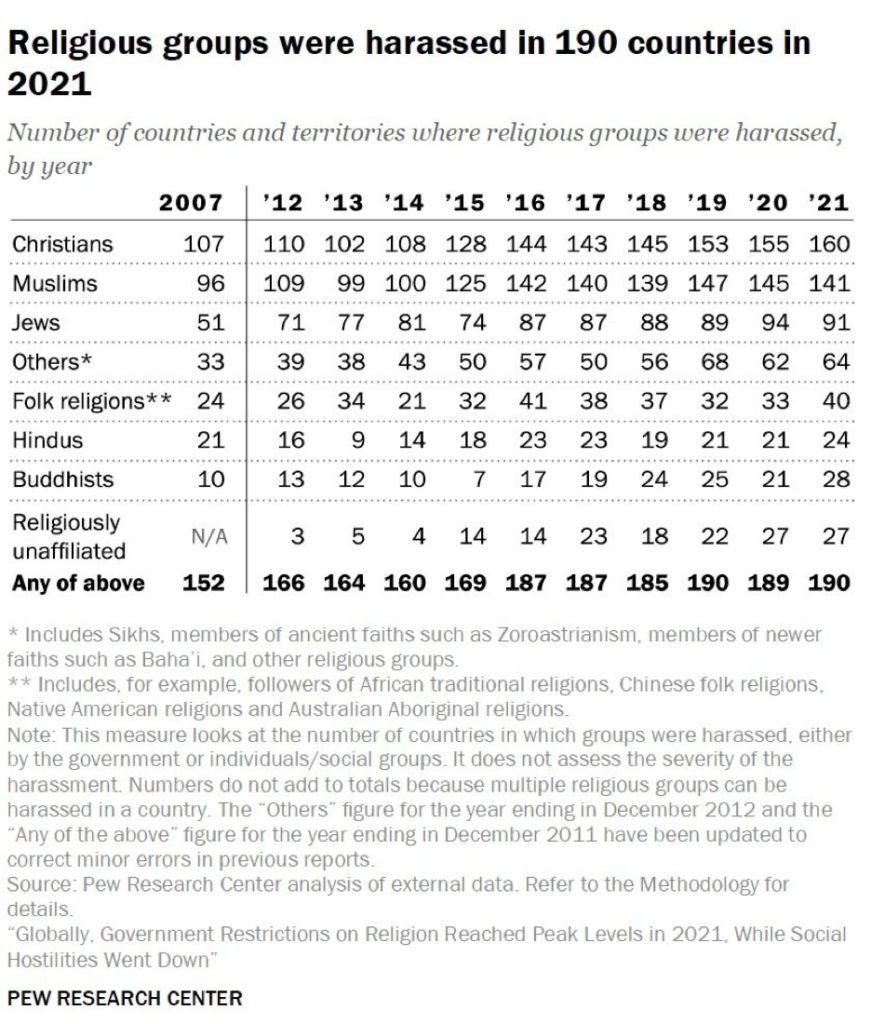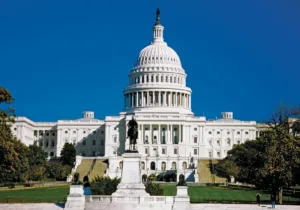On March 5, 2024, the Pew Research Center released its fourteenth annual survey on the status of religious freedom worldwide. Due to the amount of work involved in collecting the data and creating the report–which covers 198 countries and territories– the period it covers is the world in 2021. The survey finds that overall religious freedom in the world has continued to decline, paralleling the global deterioration of democracy and human rights in general.
Pew seeks to measure both government restrictions on religion (the GRI Index) and social hostilities based on religion (the SHI Index)–summarizing what government does to people and what people do to each other. Its general finding is that government restrictions have continued to climb, reaching a new peak in 2021, whereas social hostilities show a slight decline.
Amongst its findings for that year were that “governments harassed religious groups” in 183 countries (92% of the countries analyzed) — up from 178 countries in 2020.” This is the largest number that Pew has found since it began its religious freedom surveys. It adds that “This type of restriction was widespread across all five regions we analyzed….For example, at least one case of government harassment was reported in each of the 20 countries in the Middle East-North Africa region. The same was true for 43 of 45 countries in Europe (96%), 33 of 35 countries in the Americas (94%), 44 of 48 countries in sub-Saharan Africa (92%) and 43 of 50 countries in the Asia-Pacific region (86%).”

Pew gives a global median score of 3.0 for government restrictions, up from 2.8 in 2020, This was also “the highest global median score since we began tracking restrictions in 2007.”
— 55 countries (28% of the total) had “high” or “very high” levels of government restrictions — slightly down from 57 countries (29%), a level reached in 2020, 2019 and 2012.
— 43 countries (22% of all studied) had “high” or “very high” levels of social hostilities, up from 40 countries (20%) in 2020.
On social hostilities: “The global median level of social hostilities involving religion – including violence and harassment by private individuals, organizations or groups – fell from 1.8 in 2020 to 1.6 in 2021 on the Social Hostilities Index, a 10-point scale composed of 13 indicators. 43 countries (22% of all studied) had “high” or “very high” levels of social hostilities in 2021, up from 40 countries (20%) in 2020 but still closer to the low point (18%) than to the high point (33%) previously recorded over the course of the study. In total religious groups were harassed in a total of 190 countries.” This is 96% of all the countries and territories surveyed.

Christians were the most widely harassed group, in a total of 160 countries, followed by Muslims in 141 countries. All larger religious groups are harassed somewhere, and the level has increased substantially over 14 years, in several cases almost doubling.
Governmental and social restrictions often vary in different ways, but four countries – Afghanistan, Egypt, Pakistan and Syria – had “very high” levels of both government restrictions and social hostilities involving religion.
(As an aside, there are some countries and areas, such as North Korea that Pew does not score because they lack data. One is Greenland, part of Denmark. As one of the few people, I surmise, who has reviewed religious freedom in Greenland, may I be allowed an indulgence. There was a troubling issue in 2021 in an otherwise very free setting. Probably out of concern about Islamic radicalism, Denmark initiated a draft law requiring religious groups to provide Danish translations of their sermons and messages. But the official language of Greenland is Greenlandic. Hence the law would have required a Greenlander preaching to Greenlanders in Greenlandic to provide the government with a Danish translation, a burden for small and scattered congregations. This illustrates that several restrictions on religious freedom arise not from governmental animus but from bureaucratic blunder.)
These recorded trends in government repression of religion are alarming. But, even though the survey also gives examples and illustrations of the problems it documents, it is still dry reading. Some of this is to deliberately emphasize the methodical nature of the study, Hence, it needs to be supplemented with a greater human element in order to show the widespread suffering that lies behind these figures.







 Sponsor a student for Christianity & National Security 2024
Sponsor a student for Christianity & National Security 2024